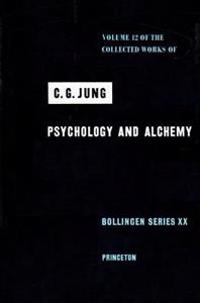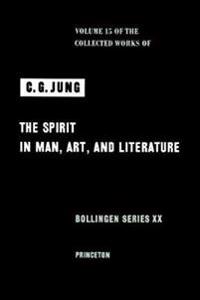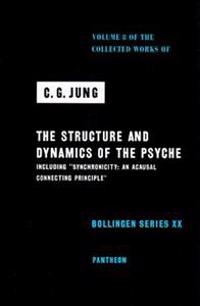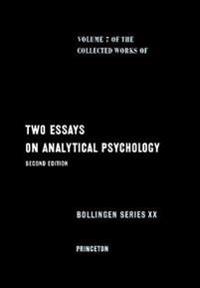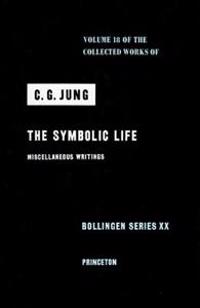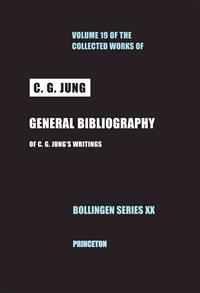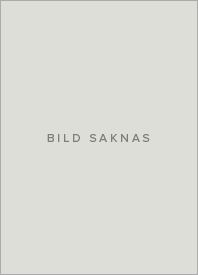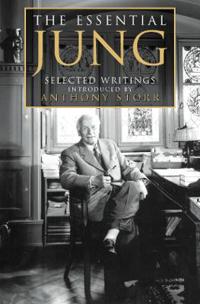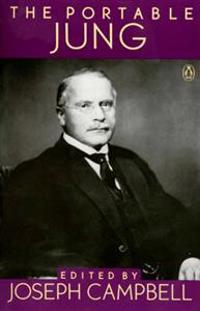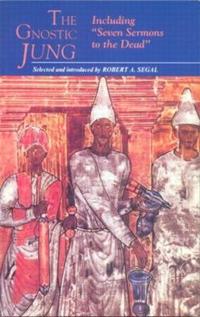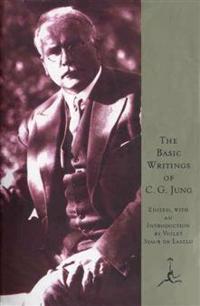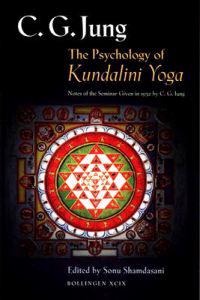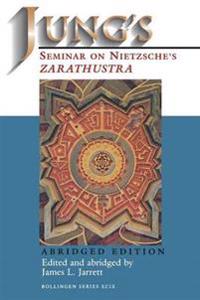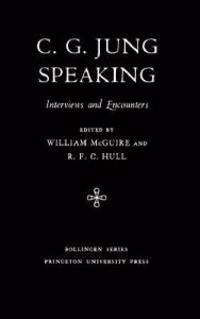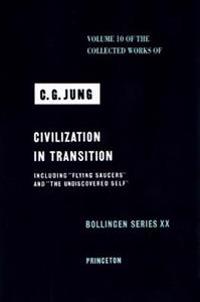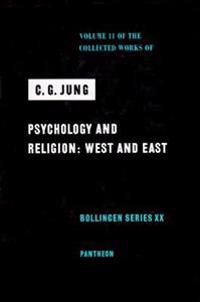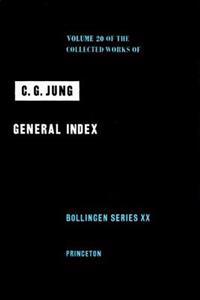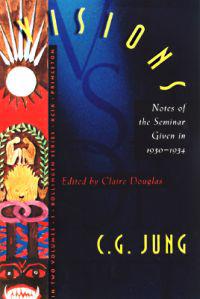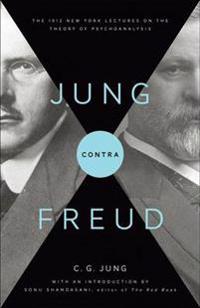Collected Works of C.G. Jung, Volume 12: Psychology and Alchemy (Inbunden)
avCarl Gustav Jung, C. G. Jung, William McGuire
ISBN: 9780691097718 - UTGIVEN: 196808A study of the analogies between alchemy, Christian dogma, and psychological symbolism. Revised translation, with new bibliography and index.[...]
Collected Works of C.G. Jung, Volume 15: Spirit in Man, Art, and Literature (Inbunden)
avCarl Gustav Jung, C. G. Jung, Michael Fordham
ISBN: 9780691097732 - UTGIVEN: 196612Nine essays, written between 1922 and 1941, on Paracelsus, Freud, Picasso, the sinologist Richard Wilhelm, Joyce's Ulysses, artistic creativity generally, and the source of artistic creativity in archetypal structures.[...]
Collected Works of C.G. Jung, Volume 8: Structure & Dynamics of the Psyche (Inbunden)
avCarl Gustav Jung, C. G. Jung, Michael Fordham
ISBN: 9780691097749 - UTGIVEN: 197001A revised translation of one of the most important of Jung's longer works. The volume also contains an appendix of four shorter papers on psychological typology, published between 1913 and 1935.[...]
Collected Works of C.G. Jung, Volume 7: Two Essays in Analytical Psychology (Inbunden)
avCarl Gustav Jung, C. G. Jung, Adler Gerhard
ISBN: 9780691097763 - UTGIVEN: 1967-02Provides insight into the development of Jung's thought on the psychology of the unconscious and its relation to the ego[...]
Collected Works of C.G. Jung, Volume 18: The Symbolic Life: Miscellaneous Writings (Inbunden)
avCarl Gustav Jung, C. G. Jung, William McGuire
ISBN: 9780691098920 - UTGIVEN: 197702This volume is a miscellany of writings that Jung published after the Collected Works had been planned, minor and fugitive works that he wished to assign to a special volume, and early writings that came to light in the course of research.[...]
Collected Works of C.G. Jung, Volume 19: General Bibliography. (Revised Edition) (Inbunden)
avLisa Ress, Carl Gustav Jung, C. G. Jung
ISBN: 9780691098937 - UTGIVEN: 197904As a current record of all of C. G. Jung's publications in German and in English, this volume will replace the general bibliography published in 1979 as Volume 19 of the Collected Works of C. G. Jung. In the form of a checklist, this new volume records through 1990 the initial publication of each or[...]
C.G. Jung Letters, Volume 1 (Inbunden)
avCarl Gustav Jung, C. G. Jung, Aniela Jaffe
ISBN: 9780691098951 - UTGIVEN: 1992-06Beginning with Jung's earliest correspondence to associates of the psychoanalytic period and ending shortly before his death, the 935 letters selected for these two volumes offer a running commentary on his creativity. The recipients of the letters include Mircea Eliade, Sigmund Freud, Esther Hardin[...]
Essential Jung (Häftad)
avC. G. Jung
ISBN: 9780006530657 - UTGIVEN: 199806This compact volume of extracts from the 20 volumes of Jung's published writings, presents him clearly, in his own words and in precis. It is proposed that Jung's writing is the key to understanding 20th-century psychology, psychiatry and psychoanalysis.[...]
The Portable Jung (Häftad)
avCarl Gustav Jung, Joseph Campbell
ISBN: 9780140150704 - UTGIVEN: 197612This comprehensive collection of writings by the epoch-shaping Swiss psychoanalyst was edited by Joseph Campbell, himself the most famous of Jung's American followers. It comprises Jung's pioneering studies of the structure of the psyche--including the works that introduced such notions as the colle[...]
The Gnostic Jung (Pocket)
avC. G. Jung
ISBN: 9780415080385 - UTGIVEN: 1992-10Gnosticism was for C.G. jung the chief prefiguration of his analytical psychology. In this volume Robert Segal, an authority on theories of myth and Gnosticism, has searched the Jungian corpus for Jung's main discussions of this ancient form of spirituality. The progression in Gnosticism from sheer [...]
Jung On Evil (Pocket)
avC. G. Jung
ISBN: 9780415089708 - UTGIVEN: 1995-08-24Evil became a central issue for Jung as he grew older. This text brings together a key selection of Jung's writings to provide an accessible account of Jung's thought on evil.[...]
Jung On Synchronicity And The Paranormal (Pocket)
avC. G. Jung
ISBN: 9780415155090 - UTGIVEN: 1997-08-07Roderick Main brings together a selection of both the well-known and less acessible of Jung's writings on psychic phenomena and synchronicity. His introduction sets out clearly the theory of synchronicity, clarifying the more complex issues.[...]
The Basic Writings of Jung (Inbunden)
avC. G. Jung
ISBN: 9780679600718 - UTGIVEN: 199705In exploring the manifestations of human spiritual experience both in the imaginative activities of the individual and in the formation of mythologies and of religious symbolism in various cultures, C. G. Jung laid the groundwork for a psychology of the spirit. The excerpts here illuminate the conce[...]
The Psychology of Kundalini Yoga: Notes of the Seminar Given in 1932 by C. G. Jung (Häftad)
avCarl Gustav Jung, Sonu Shamdasani
ISBN: 9780691006765 - UTGIVEN: 199907"Kundalini yoga presented Jung with a model of something that was almost completely lacking in Western psychology--an account of the development phases of higher consciousness.... Jung's insistence on the psychogenic and symbolic significance of such states is even more timely now than then. As R. D[...]
Jung on Christianity (Övrig)
avC. G. Jung
ISBN: 9780691006970 - UTGIVEN: 1999-09-22C. G. Jung, son of a Swiss Reformed pastor, used his Christian background throughout his career to illuminate the psychological roots of all religions. Jung believed religion was a profound, psychological response to the unknown - both the inner self and the outer worlds - and he understood Christia[...]
Jung's Seminar on Nietzsche's "Zarathustra": (Abridged Edition) (Häftad)
avCarl Gustav Jung, James L. Jarrett
ISBN: 9780691017389 - UTGIVEN: 199711Nietzsche's infamous work "Thus Spake Zarathustra" is filled with a strange sense of religiosity that seems to run counter to the philosopher's usual polemics against religious faith. For some scholars, this book marks little but a mental decline in the great philosopher; for C. G. Jung, "Zarathustr[...]
C.G. Jung Speaking: Interviews and Encounters (Häftad)
avC. G. Jung, William McGuire
ISBN: 9780691018713 - UTGIVEN: 198702A collection of journalistic interviews which span Jung's lifetime. This book captures his personality and spirit in more than 50 accounts of talks and meetings with him. They range from transcripts of interviews for radio, television, and film to memoirs written by notable personalities.[...]
Jung - Answer to Job, 50th Anniversary Edition (Pocket)
avCJ Jung
ISBN: 9780691092775 - UTGIVEN: 2022-02-22Collected Works of C.G. Jung, Volume 10: Civilization in Transition (Inbunden)
avC. G. Jung, Herbert Edward Read, , Bollingen Series, 20
ISBN: 9780691097626 - UTGIVEN: 197008Essays bearing on the contemporary scene and on the relation of the individual to society, including papers written during the 1920s and 1930s focusing on the upheaval in Germany, and two major works of Jung's last years, "The Undiscovered Self" and "Flying Saucers."[...]
Collected Works of C.G. Jung, Volume 11: Psychology and Religion: West and East (Inbunden)
avC. G. Jung, Michael Fordham
ISBN: 9780691097725 - UTGIVEN: 197001Sixteen studies in religious phenomena, including "Psychology and Religion" and "Answer to Job."
Collected Works of C.G. Jung, The: v. 5: Symbols of Transformation (Inbunden)
avC. G. Jung
ISBN: 9780691097756 - UTGIVEN: 1967-09-01Collected Works of C.G. Jung, Volume 20: General Index (Inbunden)
avGerhard Adler, Barbara Forryan, Carl Gustav Jung
ISBN: 9780691098678 - UTGIVEN: 1979-04An exceptionally comprehensive index by paragraph numbers. Certain subjects are treated in separate sub-indexes within the General Index. These include alchemy, animals, the Bible, colors, Freud, Jung, and numbers.[...]
Zofingia Lectures, The: (Supplementary Volume A of the Collected Works of C.G. Jung) (Inbunden)
avC. G. Jung
ISBN: 9780691098999 - UTGIVEN: 1983-11-01Visions: Notes of the Seminar Given in 1930-1934 by C. G. Jung (Inbunden)
avCarl Gustav Jung, Claire Douglas, Claire Douglas
ISBN: 9780691099712 - UTGIVEN: 1997-12For C. G. Jung, the beautiful and gifted 28-year-old Christiana Morgan was an inspirational and confirming force whose path in self-analysis paralleled his own quest for self-knowledge. By teaching Morgan the trance-like technique of active imagination, Jung launched her on a pilgrimage of archetypa[...]
Jung Contra Freud: The 1912 New York Lectures on the Theory of Psychoanalysis (Häftad)
avC. G. Jung, Sonu Shamdasani
ISBN: 9780691152516 - UTGIVEN: 201112In the autumn of 1912, C. G. Jung, then president of the International Psychoanalytic Association, set out his critique and reformulation of the theory of psychoanalysis in a series of lectures in New York, ideas that were to prove unacceptable to Freud, thus creating a schism in the Freudian school[...]

